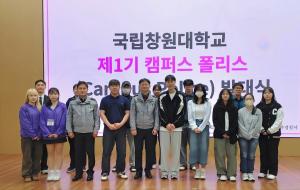 |
| ▲ A visually impaired man is walking along the Braille blocks using a white cane (Source: Pinterest) |
These days, people are living in an era of the so- called 'information flood' where numerous visual media platforms are overflowing. Although many people are using global OTT platforms and mobile apps dedicated to domestic shopping, delivery, and video streaming, visually impaired people are driven to blind spots, excluded from the ‘information flood’ era of media over multiple platforms.
As we enter the information age, we are exposed to a greater amount of video content than ever before. However, as the number of videos that are difficult for the visually impaired to understand with only general audio material is increasing, the accessibility of content for the visually impaired is significantly decreasing. In order for the visually impaired to watch TV broadcasts, they need support for ‘Descriptive Video Service,’ which is a broadcaster that explains the situation on the screen by voice- over, but the reality is that depending on the broadcasting company, there are stark differences in the formation of prime time and unequal distribution of genres. As of last year, the proportion of Descriptive Video Services by the three terrestrial broadcasters and the four synthesized programming channels was 15.1%. All seven major broadcasters met the 10% programming standard, but the programming ratio varied by up to two times depending on the broadcasting company. In addition, the proportion of Descriptive Video Services was particularly low during the prime time from 7 PM to 11 PM on weekdays and from 6 PM to 11 PM on weekends and public holidays. If the total programming of Descriptive Video Service is set at 100%, the average programming ratio of the seven broadcasting stations during the peak time was 4.6%. Meanwhile, media such as OTT do not provide closed captions or audio descriptions. The reason is that under the current law, the legal status of OTT operators is 'value added common carrier' and, unlike 'broadcasting businessmen,' they do not have obligations such as providing subtitles, sign language, and screen description for the disabled.
Visually impaired people face a series of inconveniences and difficulties even when using apps. As a result of a survey conducted by the Korea Consumer Agency last year, 92.2% of a total of 193 visually impaired people experienced difficulties in checking product and service information, and 64.7% of consumers cited 'not providing alternative text' as the most significant reason. ‘Alternative text’ is text or phrases that explain an image so that a screen reader for the visually impaired can recognize it, and ‘closed caption’ is a service that supports not only dialogue but also sound as subtitles. In February last year, the Korea Consumer Agency surveyed a total of 16 apps closely related to consumer life and found that none of them clearly provided alternative text and closed captions for the visually impaired. Among them, all nine shopping apps didn't provide alternative text on the product page, and all three delivery apps did not provide alternative text for the security keypad during the card registration process on the payment page. In the case of domestic video streaming apps, only one out of four provided closed captioning for video content.
Efforts in various fields are required to ensure the right of choice for the visually impaired, who are suffering from an information drought. Looking at the amendments proposed by the National Assembly for the visually impaired thus far, it has proposed an amendment that includes expanding the obligation to provide Korean sign language, closed captions, and audio description to OTT platforms, which are value added common carriers, and an amendment to the Broadcasting Act that requires broadcasting businessmen to broadcast dubbing in Korean for foreign language movies and animations.
In order to ensure accessibility to information and media for the visually impaired, interest and step- by- step efforts from all of us are important. In the future, we look forward to the support and actions of the government and companies in relation to the amendment and the production of barrier- free content that can accommodate children and the elderly as well as the visually impaired.
By Jo Ah-bin, cub-reporter opal_40@naver.com
<저작권자 © The Campus Journal, 무단 전재 및 재배포 금지>

 Shrinkflation, Consumer Deception
Shrinkflation, Consumer Deception




